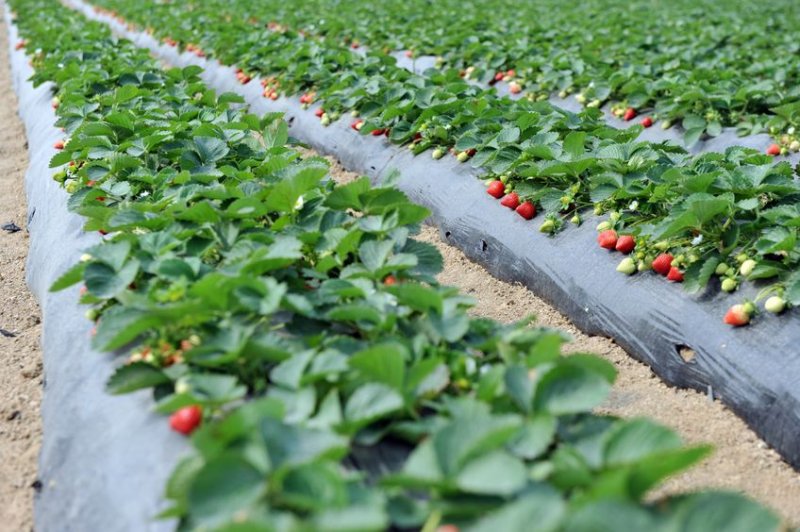
A real-time system for calculating when to use fungicides to control the growth of strawberry powdery mildew has been created by agri-tech experts.
The new tool forecasts when the fungus is likely to grow and alerts the grower to high-risk periods when fungicide sprays are needed.
It records humidity and temperature, and can be used on smartphones or computers.
Strawberry powdery mildew is caused by the fungus Podosphaera aphanis and it attacks the leaves, flowers and fruit of strawberry plants, causing major yield loss.
In the UK the disease can result in yield losses of between 20% - 70%, with a 20% yield loss in 2016 costing an estimated £56.8 million, according to the AHDB.
But by using the new system, the grower can control the disease using fewer fungicide applications, reducing the risk of yield loss and saving money.
The average cost benefit of the system in 2018 was £250 per hectare, with no detriment to the crop.
Dr Avice Hall, of University of Hertfordshire, explained that the tool can help strawberry growers better manage the use of fungicides.
"Risk of disease development is clearly visualised on screen and updated continually," she said.
"It will allow them to control the disease throughout the season with fewer fungicide applications and record their fungicide use with ease from any device.
"It will enable growers to be proactive, rather than reactive, which helps reduce the use of fungicides, decreases costs and reduces environmental impacts - thus delivering high quality fruit to the consumer.”
The University of Hertfordshire, in collaboration with Agri-tech Services, developed the project. The firm has licensed the technology from the university for commercial means.
During the 2019 season, the system was validated on eight commercial sites throughout the UK and is now available to purchase.
